Flannel Bush Fremontodendron 'California Glory'

ABOUT
California Glory is a striking shrub known for its vibrant display of yellow flowers that resemble buttercups. These blooms are large with five overlapping petals creating a showy and eye-catching visual. The leaves of California Glory are dark green, slightly lobed, and have a leathery texture. Its foliage provides a lush backdrop to the bright flowers which stand out against the greenery. The blossoms typically have a velvety texture, adding to the tactile appeal of the plant. The overall form of California Glory is bushy and dense, making it a substantial presence in the landscape. The flowers not only add color but also attract pollinators such as bees and birds, adding to the dynamism of the garden setting. This plant is evergreen, meaning it retains its leaves throughout the year, contributing to its robust appearance in a variety of seasons.
About this plant
 Names
NamesFamily
Malvaceae
Synonyms
California Flannel Bush, Flannel Bush, Fremontia
Common names
Fremontodendron californicum 'California Glory', Fremontodendron 'California Glory'.
 Toxicity
ToxicityTo humans
Flannel bush can be irritating to humans due to its toxic sap. Handling the plant without protection can cause dermatitis or skin irritation in some individuals. If ingested, the plant parts can be harmful, although specific symptoms of poisoning from ingestion are not commonly documented, likely because it is not typically consumed. It's recommended to handle this plant with gloves and to avoid ingesting any part of it.
To pets
Flannel bush is also toxic to pets and can cause similar irritation as seen in humans. If your pet comes into contact with the sap or ingests parts of the plant, they might experience skin irritation or gastrointestinal upset. Symptoms could include vomiting, diarrhea, or drooling. It is best to keep pets away from this plant and to seek veterinary care if they come into contact with or ingest it.
 Characteristics
CharacteristicsLife cycle
Perennials
Foliage type
Evergreen
Color of leaves
Green
Flower color
Yellow
Height
20 feet (6 meters)
Spread
10 feet (3 meters)
Plant type
Shrub
Hardiness zones
8
Native area
California
Benefits
 General Benefits
General Benefits- Drought Tolerance: Once established, the California Flannel Bush is highly resistant to drought, making it ideal for water-conservation landscaping.
- Low Maintenance: It requires minimal care once established, with no need for frequent watering or fertilizing.
- Attracts Pollinators: Its bright yellow flowers attract bees, butterflies, and other pollinators, promoting biodiversity.
- Ornamental Appeal: Its vibrant yellow blooms and lush green foliage make it a standout feature in ornamental gardens.
- Fast Growth: The California Flannel Bush grows relatively quickly, providing rapid landscape coverage and aesthetic appeal.
- Erosion Control: Its root system helps stabilize slopes and hillsides, making it useful in controlling erosion.
- Wildlife Habitat: It can provide shelter and food for various species of wildlife, including birds.
- Disease Resistance: It is generally resistant to many common plant diseases, ensuring a robust presence in the garden.
 Medical Properties
Medical PropertiesThis plant is not used for medical purposes.
 Air-purifying Qualities
Air-purifying QualitiesThis plant is not specifically known for air purifying qualities.
 Other Uses
Other Uses- Textile Dyeing: The blossoms of Fremontodendron 'California Glory' can be used to create natural dyes for textiles, offering a range of yellow and green hues depending on the mordant used.
- Insect Attraction: The bright flowers can attract beneficial insects into the garden, such as pollinators and predatory insects that can help control pest populations.
- Photography Backdrop: The showy yellow flowers provide an attractive background for outdoor photography sessions, particularly in the spring and early summer months.
- Themed Landscapes: This plant is often used in 'Californian native' themed gardens to represent the local flora and create regional authenticity.
- Erosion Control: The dense and robust root systems help stabilize slopes and banks in garden landscapes, reducing soil erosion.
- Habitat Restoration: Fremontodendron 'California Glory' can be used in habitat restoration projects to help reintroduce native species into areas where the ecosystem has been disturbed.
- Windbreaks: Taller specimens can be planted in a row to form a windbreak, helping to reduce the impact of wind on more delicate plants and garden areas.
- Seasonal Interest: In regions with mild winters, the evergreen nature of this plant adds greenery and interest during the colder months.
- Educational Tool: The plant's characteristics and adaptability make it suitable for educational gardens, teaching about drought-tolerant and native plants.
- Screening: Its rapid growth and dense foliage can be utilized in gardens to provide a quick visual screen from neighboring properties or unsightly areas.
Interesting Facts
 Feng Shui
Feng ShuiThe Flannel Bush is not used in Feng Shui practice.
 Zodiac Sign Compitability
Zodiac Sign CompitabilityThe Flannel Bush is not used in astrology practice.
 Plant Symbolism
Plant Symbolism- Resilience: The Flannel Bush thrives in the arid climates of California, symbolizing the ability to endure and prosper in harsh conditions.
- Beauty: With its large, vibrant yellow flowers, the Flannel Bush represents natural beauty and the appreciation of visual splendor.
- Optimism: The bright blooms of the Flannel Bush can signify a sense of optimism and positivity, much like a sunny day in its native California setting.
- Vitality: The vigorous growth habit and lush foliage of the Flannel Bush are symbolic of vitality and robust health.
 Water
WaterFlannel Bush should be watered moderately during its growing season, which typically means providing about one to two gallons per week, depending on the size of the plant and the weather conditions. However, it is important to allow the soil to dry out between waterings, as the plant is drought-tolerant and can suffer from root rot if overwatered. During the winter months, reduce watering significantly and only water if the soil is very dry to the touch, as the plant goes somewhat dormant and requires less moisture.
 Light
LightFlannel Bush thrives best in full sunlight conditions, so it is ideal to plant it in a spot where it can receive at least six to eight hours of direct sunlight each day. Avoid placing it in areas with shade as this can hinder its growth and flowering potential.
 Temperature
TemperatureFlannel Bush is suited to a range of temperatures and can withstand brief cold spells. It can tolerate a minimum temperature of around 20 degrees Fahrenheit but prefers warmer climates. The ideal temperature range for this plant is between 60 and 85 degrees Fahrenheit. However, it is resilient and can handle hotter temperatures during summer months, as long as it is not overwatered.
 Pruning
PruningFlannel Bush benefits from pruning to shape the plant, encourage bushier growth, and remove any dead or diseased branches. The best time to prune is after the plant has finished flowering, usually in late spring or early summer. It is recommended to limit the pruning to about one-third of the plant to prevent stress and ensure plant health. Be cautious as the sap can be an irritant; wear gloves and long sleeves.
 Cleaning
CleaningNot needed
 Soil
SoilFlannel Bush thrives in well-draining soil with low to moderate fertility; a mixture of sand, loam, and compost is ideal. Its preferred pH range is slightly acidic to neutral, between 5.5 and 7.5.
 Repotting
RepottingFlannel Bush rarely needs repotting due to its preference for being left undisturbed; it is typically repotted only when absolutely necessary, such as when outgrowing its current container.
 Humidity & Misting
Humidity & MistingFlannel Bush is drought-tolerant and does best in low humidity environments, reflecting its native California habitat.
 Suitable locations
Suitable locationsIndoor
Provide bright light, well-draining soil, and minimal water.
Outdoor
Full sun, well-drained soil, low water; protect from harsh winds.
Hardiness zone
8-10 USDA
 Life cycle
Life cycleFlannel Bush 'California Glory' life cycle starts with seed germination, which occurs when the conditions are warm and moist. Following germination, seedlings grow rapidly, provided they have well-draining soil and full sun exposure. As the plant matures, it develops into a large, evergreen shrub with leathery leaves and a bushy appearance. The Flannel Bush typically blooms in late spring to early summer, displaying vibrant yellow, trumpet-shaped flowers that attract pollinators like bees and hummingbirds. After the flowering stage, fruits develop in the form of dry, interesting-looking capsules that eventually open to disperse seeds. The plant can live several years, thriving in warm climates with minimal water and care, though it has a somewhat shorter lifespan compared to many other shrubs due to its susceptibility to root rot if overwatered or planted in poorly drained soils.
 Propogation
PropogationPropogation time
Spring-Early Summer
The most popular method of propagating the California Flannelbush is through semi-hardwood cuttings. This process is typically done in the late summer when the plant's growth starts to slow and the new stems have partially matured. Cut a segment of stem around 4-6 inches long, ensuring it has several leaf nodes. Strip the leaves from the lower half of the cutting and dip the cut end into a rooting hormone to encourage root development. Plant the cutting in a well-draining soil mix, ensuring that at least two leaf nodes are buried. Keep the soil consistently moist but not waterlogged, and place the cutting in a warm area with indirect light. Roots generally form within a few weeks to months, after which the cutting can be gradually acclimated to outdoor conditions before transplanting.
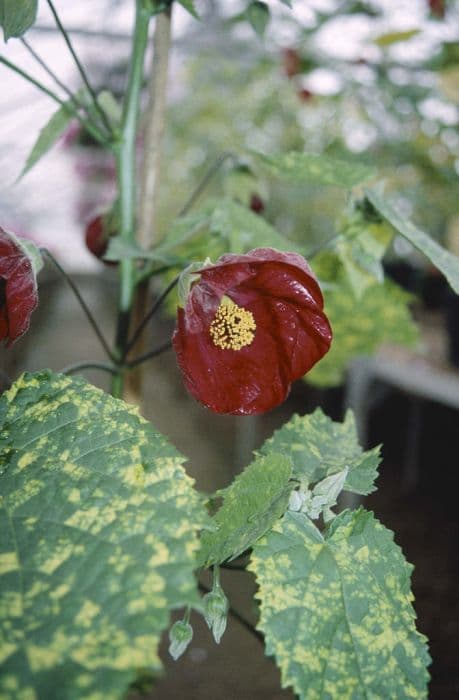
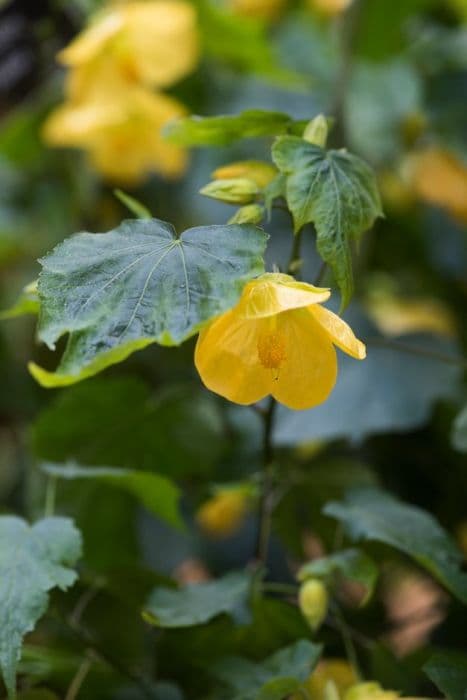
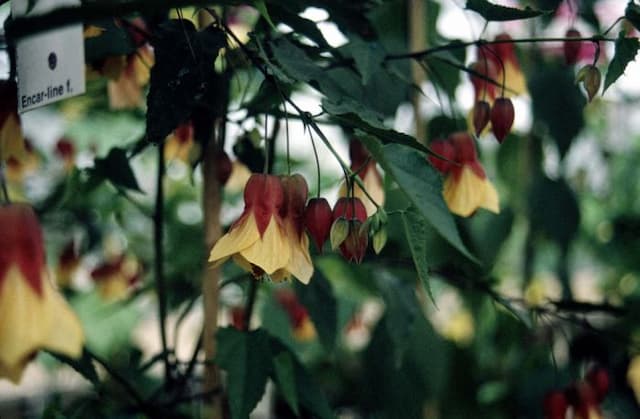
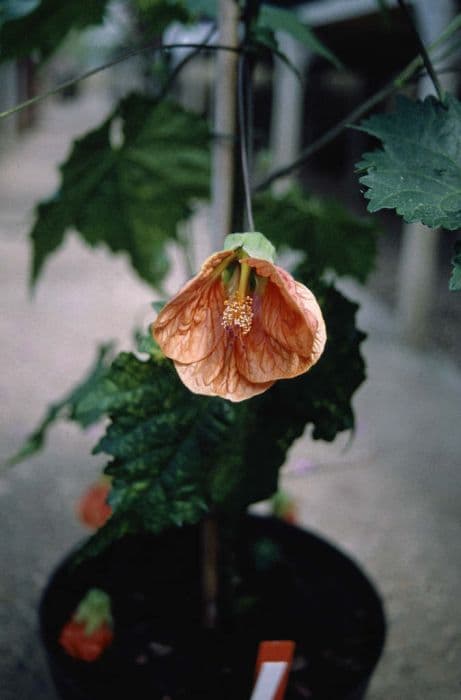
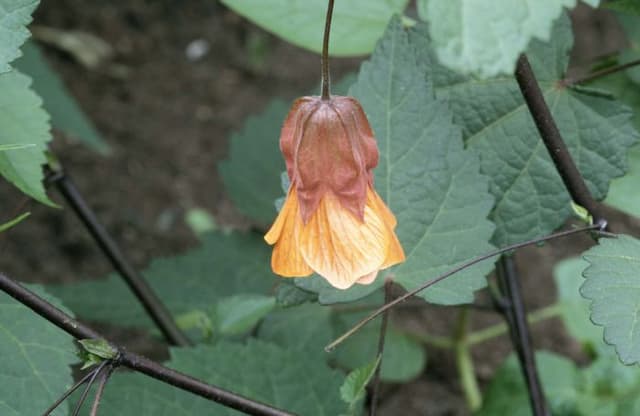

![Abutilon [Yellow Trumpet]](/_next/image?url=https%3A%2F%2Fplants-admin.emdemapps.com%2Fimages%2Fplants%2F%2Fimages%2F604b5caa8b4fb.png&w=640&q=75)

